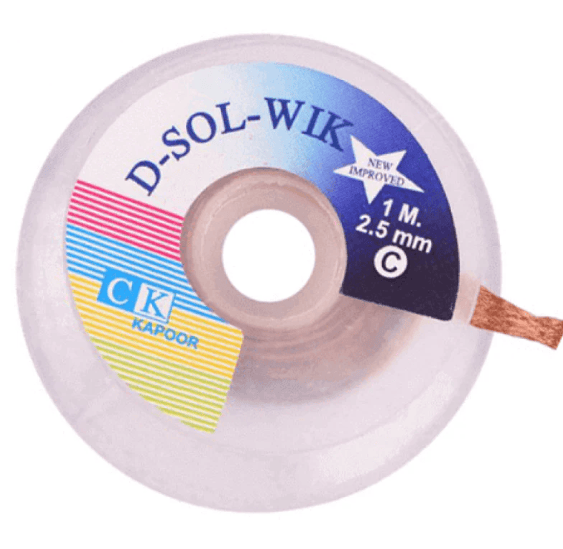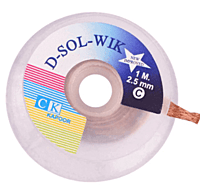

De-Soldering Wick Roll - 1metre/2.5mm dia
Non-returnable
Rs.15.00
This High quality De-soldering wick roll measures 1 meter in length and 2.5mm in width, making it perfect for precise and efficient solder removal. The copper braid quickly absorbs solder, ensuring clean and hassle-free rework on circuit boards. Ideal for electronics enthusiasts and professionals alike, it’s a must-have in any toolkit.
Product Details
Here's how desoldering wick works and how to use it:
How It Works: Desoldering wick is a thin, braided copper wire coated with flux. Flux is a chemical compound that helps to reduce the surface tension of solder, allowing it to flow more easily. The wick's purpose is to absorb and remove molten solder.
Usage Steps:
Apply Flux: If the solder joint is not already fluxed, apply a small amount of flux to the area you want to desolder. Flux helps the solder flow more easily and improves the effectiveness of the desoldering process.
Position the Wick: Lay the desoldering wick over the soldered joint you want to remove.
Heat the Solder: Use a soldering iron to heat the solder joint. The heat will cause the solder to melt and flow into the desoldering wick.
Wick Absorption: As the solder melts, the desoldering wick will absorb it through capillary action. The flux on the wick helps the solder flow into the braid.
Remove the Wick: Once the solder is absorbed into the wick, remove the wick and the soldering iron simultaneously. The wick will hold the solder as it cools down, leaving the solder joint clean.
Cut and Repeat: After using a section of desoldering wick, you can cut it off and continue with fresh wick for the next joint. This ensures maximum effectiveness.
Cleaning: Desoldering wick can become saturated with solder and flux over time. You might need to clean or replace the wick when it no longer effectively absorbs solder.
Desoldering wick is especially useful for situations where desoldering pumps (solder suckers) might not be ideal due to their bulkiness or the presence of tiny solder joints. It requires some practice to use effectively, but once mastered, it can be a valuable tool in an electronics enthusiast's toolkit.
